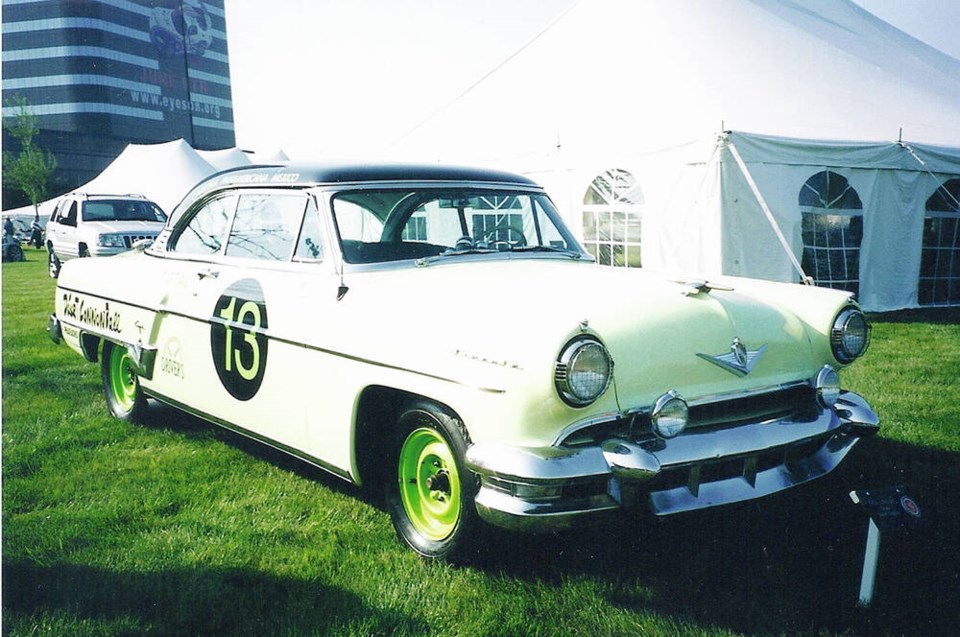It was a classic of its kind, an open-road race, long, dangerous and contested by drivers ranging from eager amateurs to seasoned professionals.
It ran through foggy mountain passes, along unfenced desert highways where animals wandered freely, and through towns where over-eager spectators parted like the Red Sea as the cars roared though.
Route elevation varied from near sea level to 3,195 m (10,482 ft. There were blind corners, car-launching dips and occasional rock slides.
This wasn’t somewhere in Europe as might be expected, but in North America. It was called the Carrera Panamericana, better known as the Mexican Road Race.
In the early days of automobiles, races were held on regular roads. It stayed that way in Europe for many years, but in North America racing was regulated onto oval tracks where cars turned in one direction.
Following the Second World War, imported sports cars revived North American road racing but for safety reasons it was soon forced back onto closed circuits, albeit now simulating regular highways. This domination of closed and oval racing made the Pan-Am an unexpected phenomenon.
The race was conceived in the late 1940s to publicize completion of the Pan-American Highway from Guatemala to the city of Ciudad Juarez opposite U.S. border town El Paso, Texas.
The realization of this 15-year dream prompted the Mexican government to showcase it with a world class road-race. President Miguel Aleman supported it and prize money was supplemented by participating Mexican states.
The initial 1950 race ran north-to-south for 3,436 km (2,135 mi) over nine legs and five days. The only modifications allowed were a slight engine overbore and stronger shock absorbers. Not surprisingly some “creative tuning” occurred.
Entries in the first race were dominated by big American cars like Buicks, Cadillacs, Lincolns, Mercurys and Oldsmobiles with a few foreigners like Jaguars and Delahayes. A portent of the future were two Italian Formula One aces Piero Taruffi and Felice Bonetto in Alfa Romeos.
Racers left Ciudad Jaurez at one-minute intervals on May 5, 1950. Five days later Herschel McGriff, a 22-year old Portland, Oregon stock car driver triumphed in his Oldsmobile 88 averaging 126 km/h (78.42 mph). Attrition claimed 52 of the 132 entries, and some fatalities occurred, an unhappy omen.
Intended as a single event it became annual as Mexico realized the financial benefits it could bring. The 1951 race was shortened to 3,112 km (1,933 mi) to eliminate some terrible roads in the south, moved to November and run south to north for the added publicity of finishing at the United States border.
In 1951 the motoring world discovered the Mexican event and its growing reputation and publicity made it a much more serious venture. Two Ferrari V-12s driven by Grand Prix stars Taruffi and Alberto Ascari were entered.
More modifications were allowed and the US. was well represented by Indy drivers like Troy Ruttman and Tony Bettenhausen.
American cars again dominated the 105 entries although an interesting foreign entry was a pair of two-litre Italian Lancia Aurelias powered by pioneering V-6 engines.
Not surprisingly the race-bred Ferraris finished one-two. Third overall was a Chrysler Saratoga with the new “Hemi” V-8. A surprising fourth was Troy Ruttman in a 1948 Mercury coupe he bought off a used car lot!
For 1952 the race became part of the International Sports World Championship, and factories began participating. There were two categories: sports cars and sedans. The usual American cars were joined by powerful foreign entries, including three new Mercedes-Benz 300SL gullwing coupes, plus Ferraris, Gordinis, Lancias and Porsches.
The stunning 300SLs took first and second in the sports category, while Lincolns finished one-two-three-four, beginning its era of dominance of the sedan class,
The 1953 race was divided four ways: small and large sports cars, and small and large stock cars. Lancia took the top three sports car places with Formula One great Juan Manuel Fangio winning. Porsche came one-two in the small sports class, and would name its Carrera model after the event.
Lincoln again won in large sedans, taking first through fourth while a Chevrolet won the small sedan category.
In 1954 Ferrari took the top four places in big sports cars; Porsche won small sports cars. Lincoln again took first and second in large stocks, its domination of the series raising its performance credentials to unprecedented heights.
Nineteen-fifty-four would be the last Pan-Am. High speed open-road racing with negligible crowd control was just too dangerous. Every year had brought at least two fatalities. A total of 26, mostly spectators, died during the five races and public outrage plus reluctance to continue closing the highway finally ended it.
The Carrera Panamericana was a legendary and exciting spectacle, but unfortunately it left a sad legacy of those who perished.



